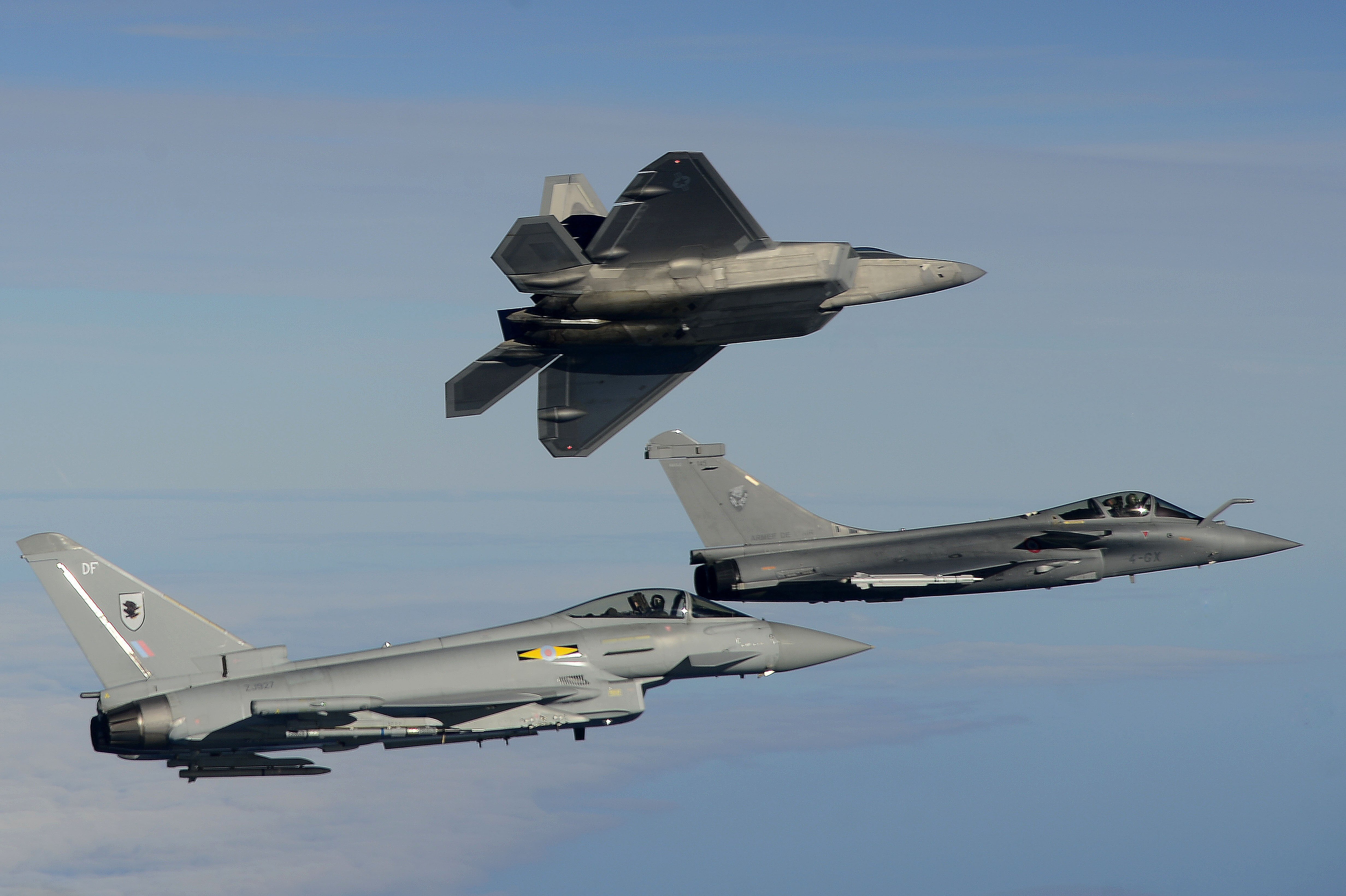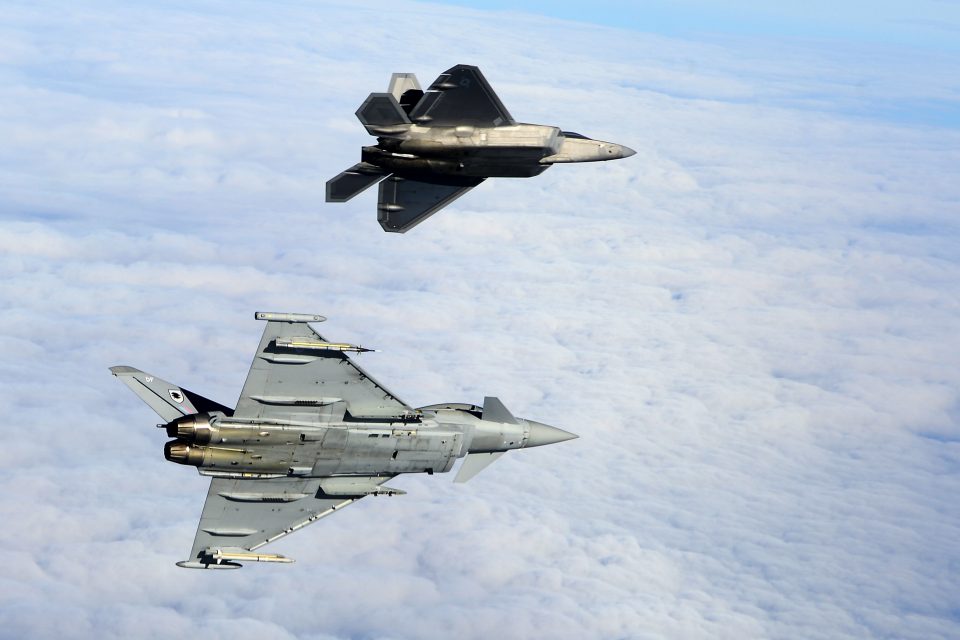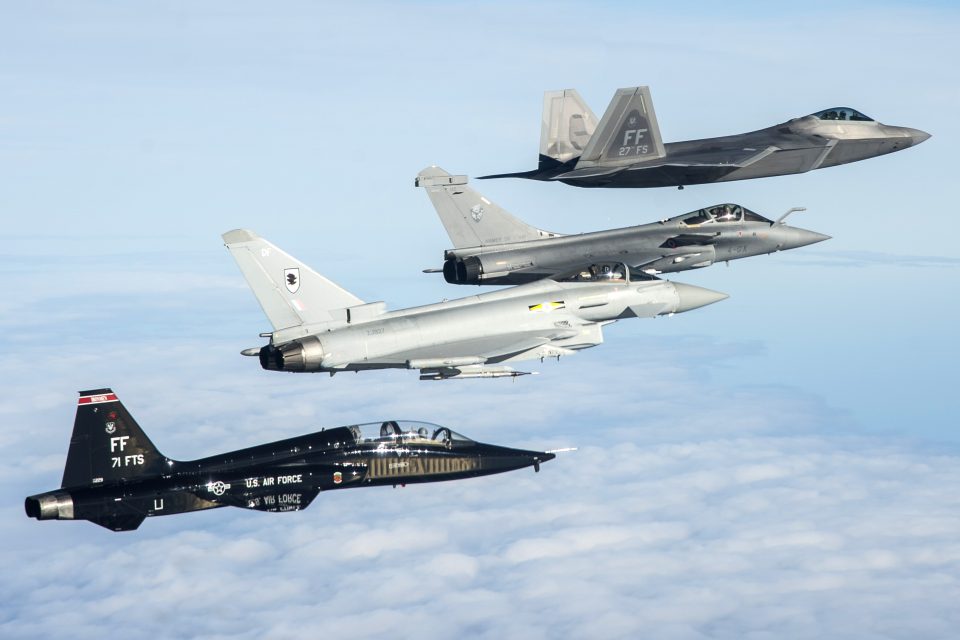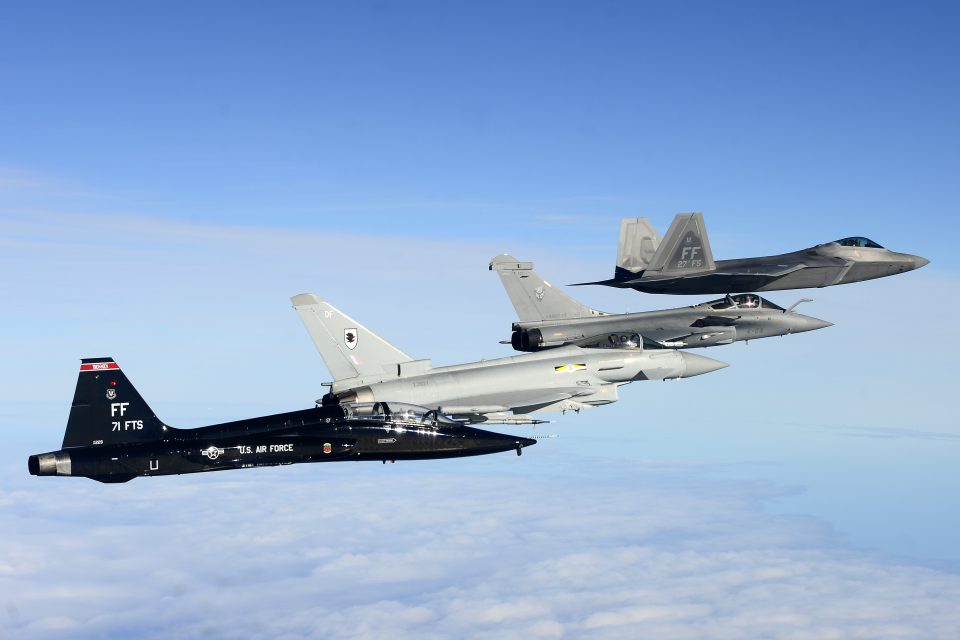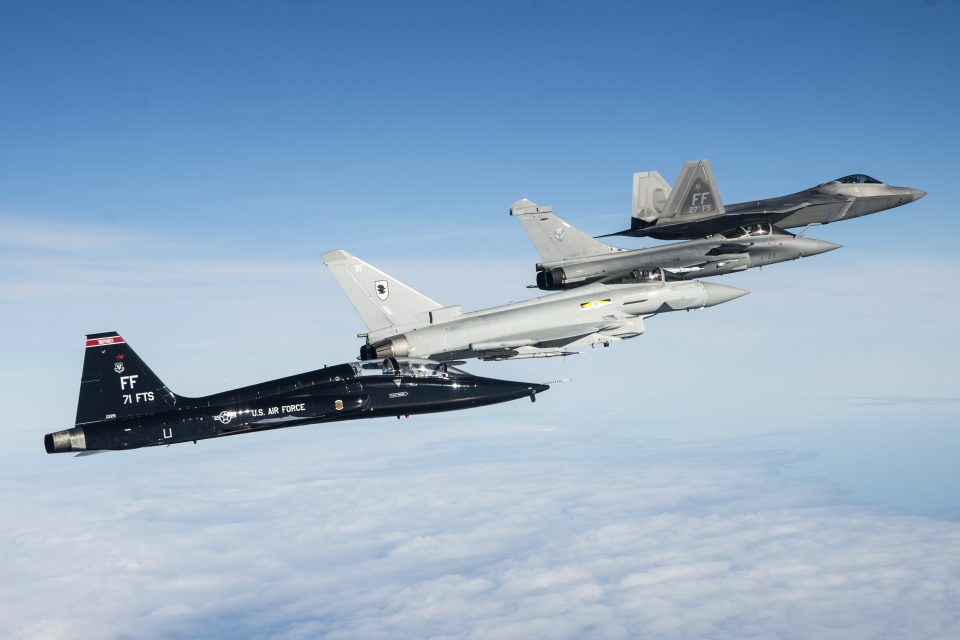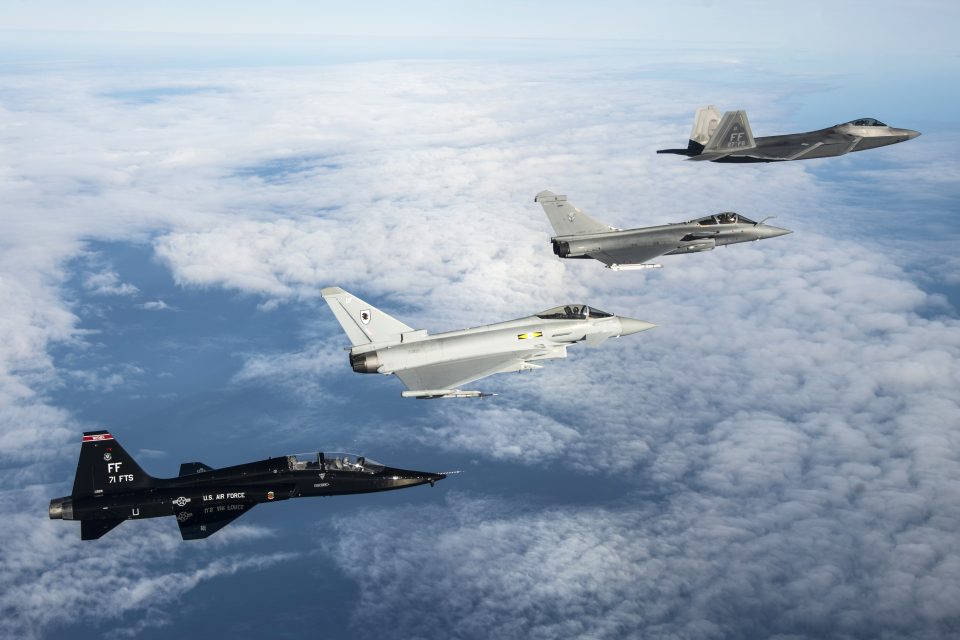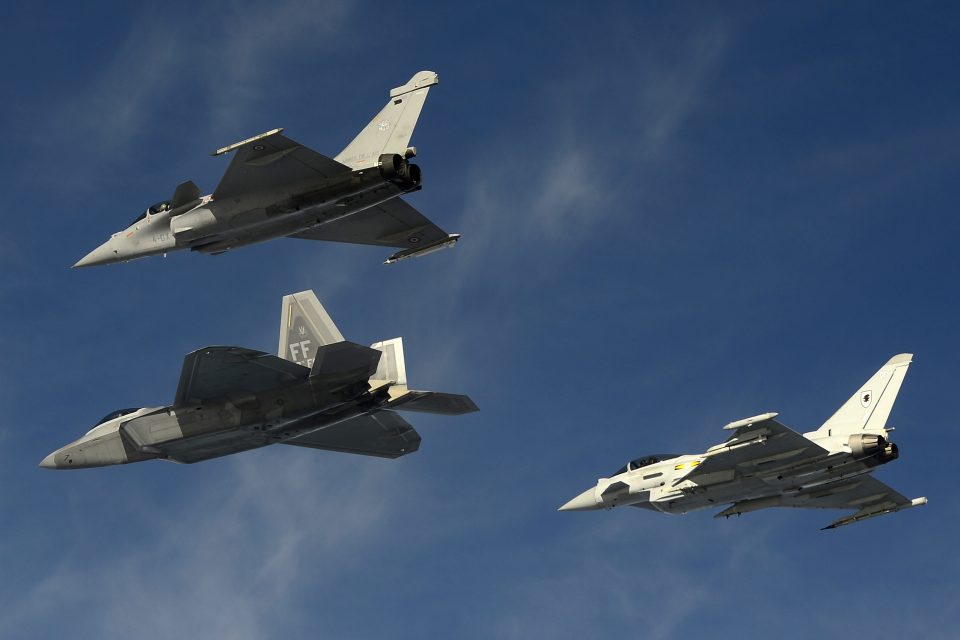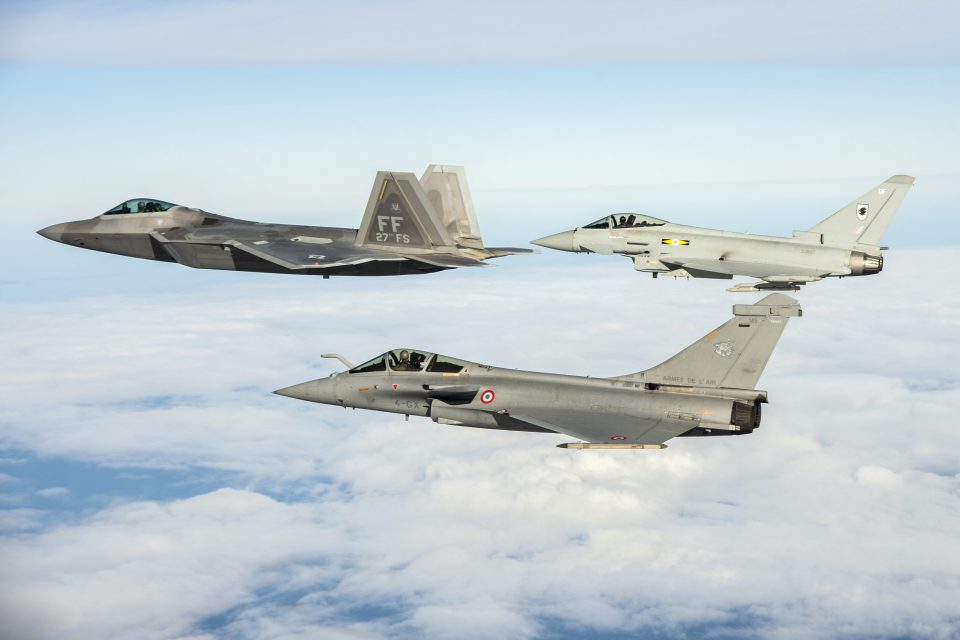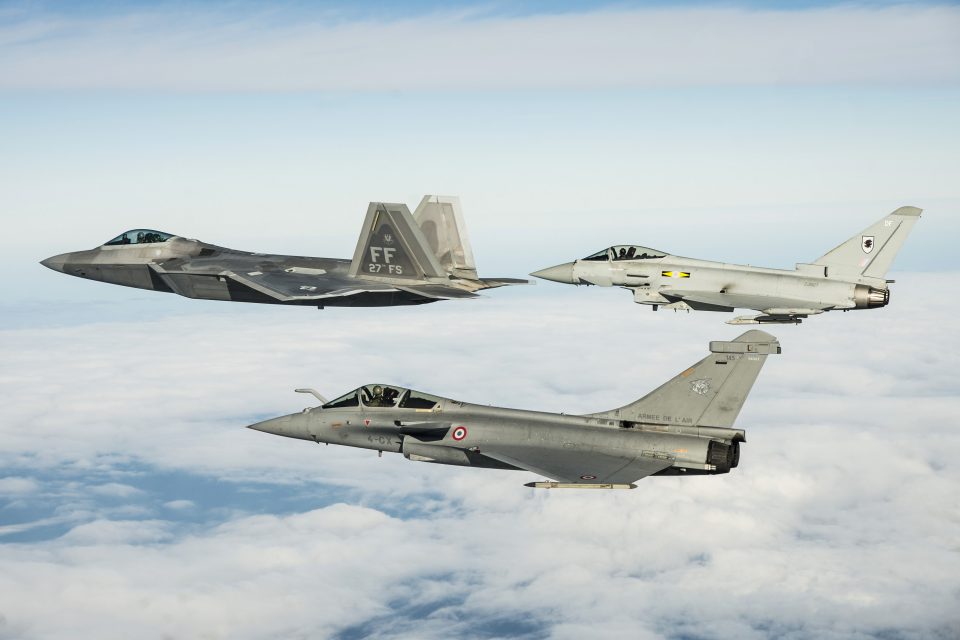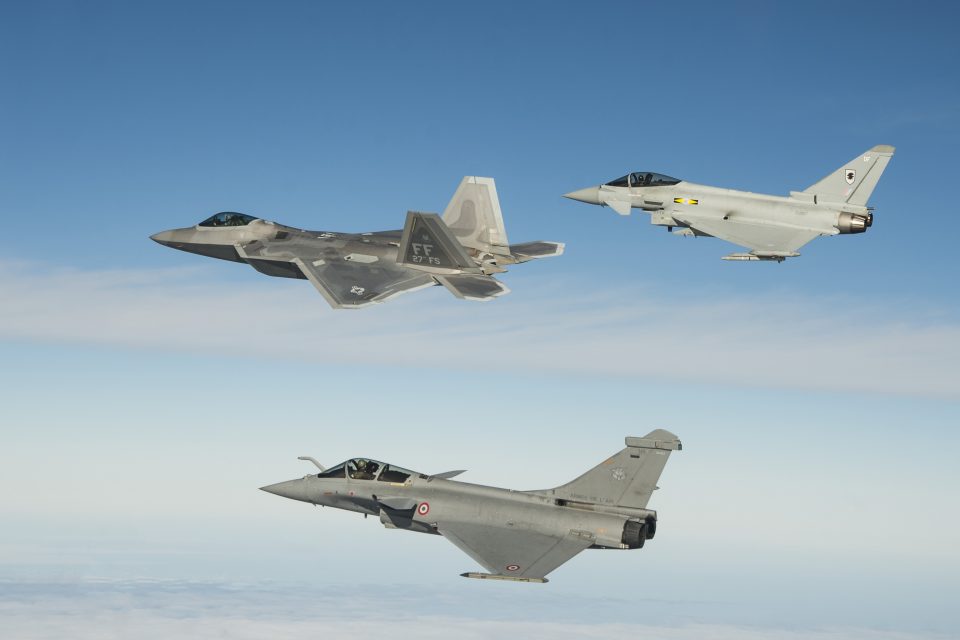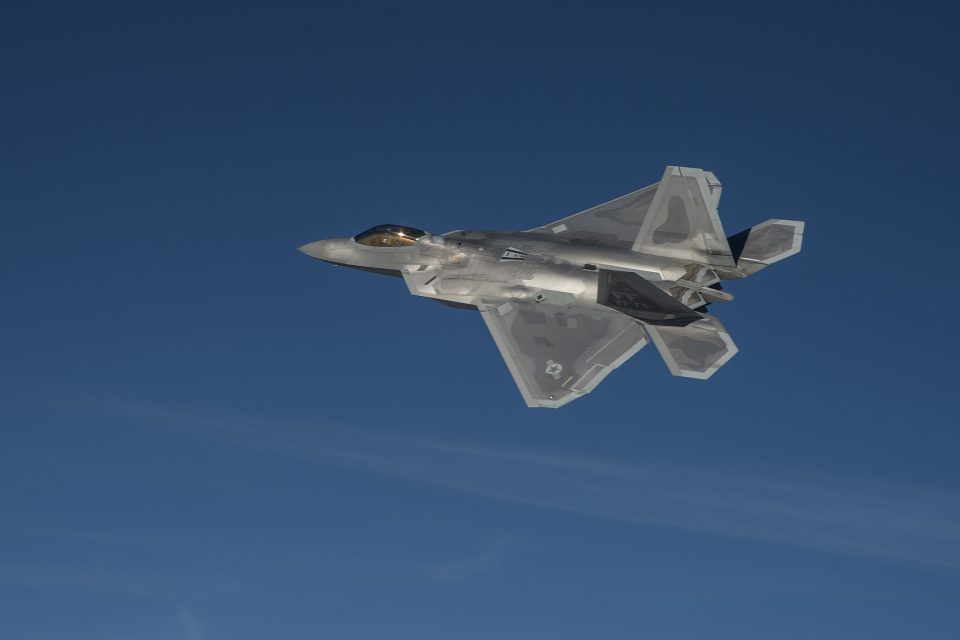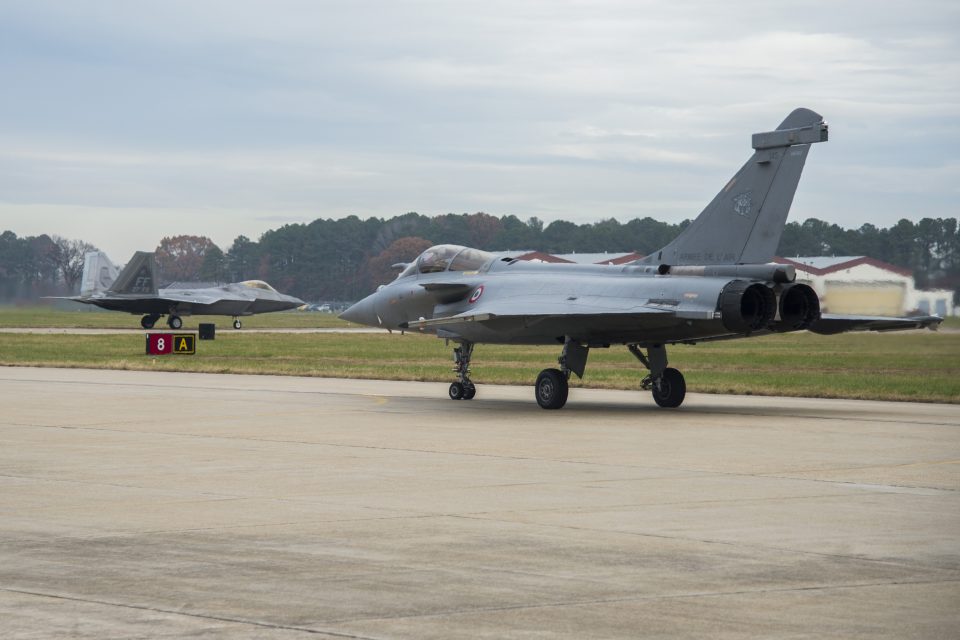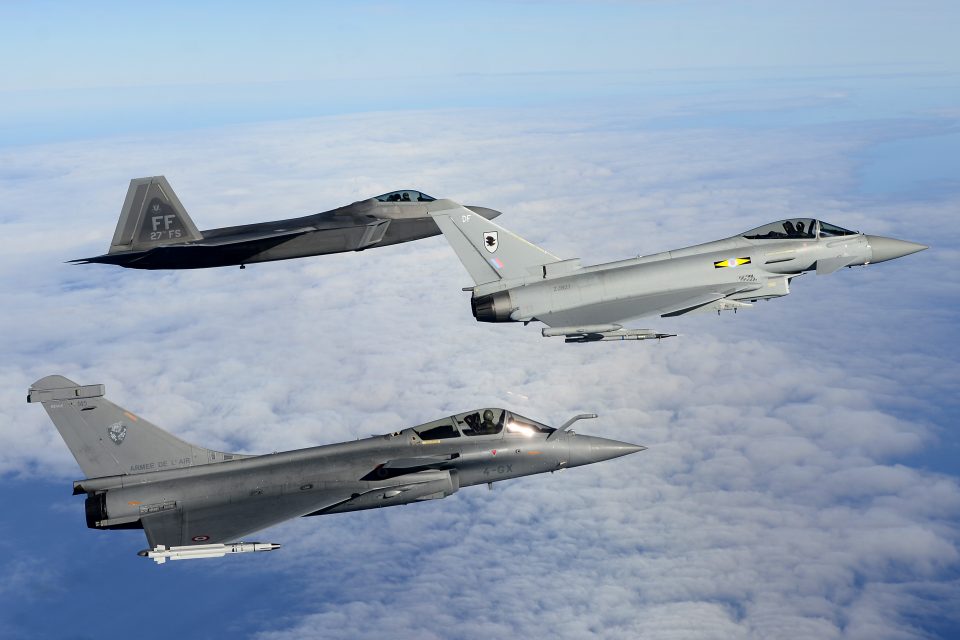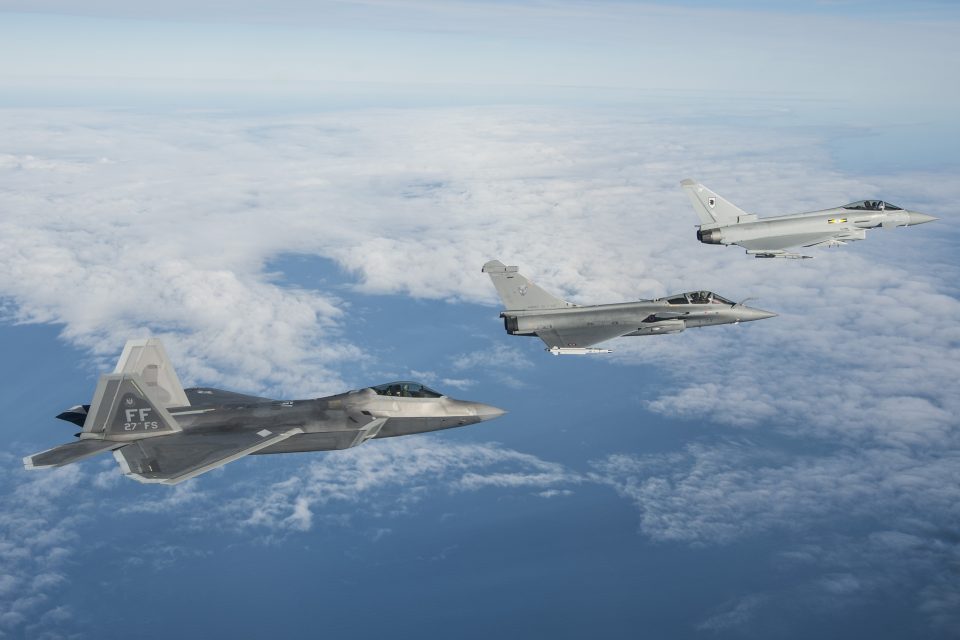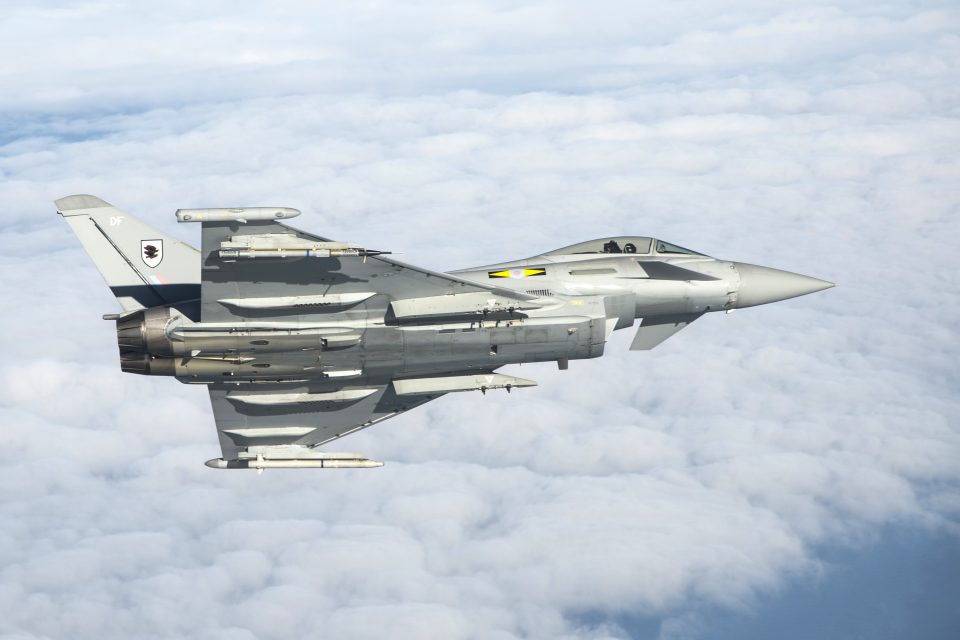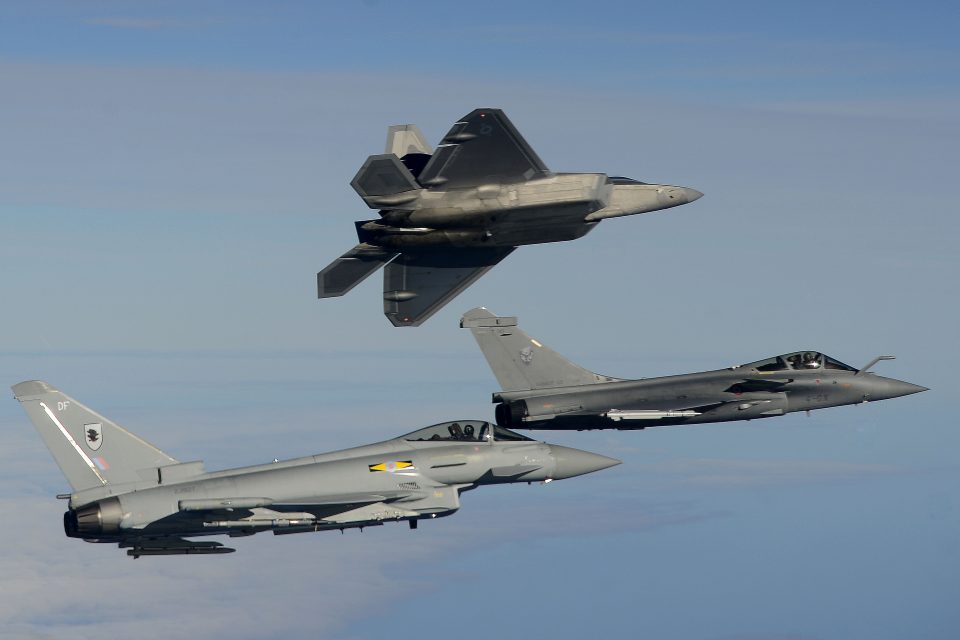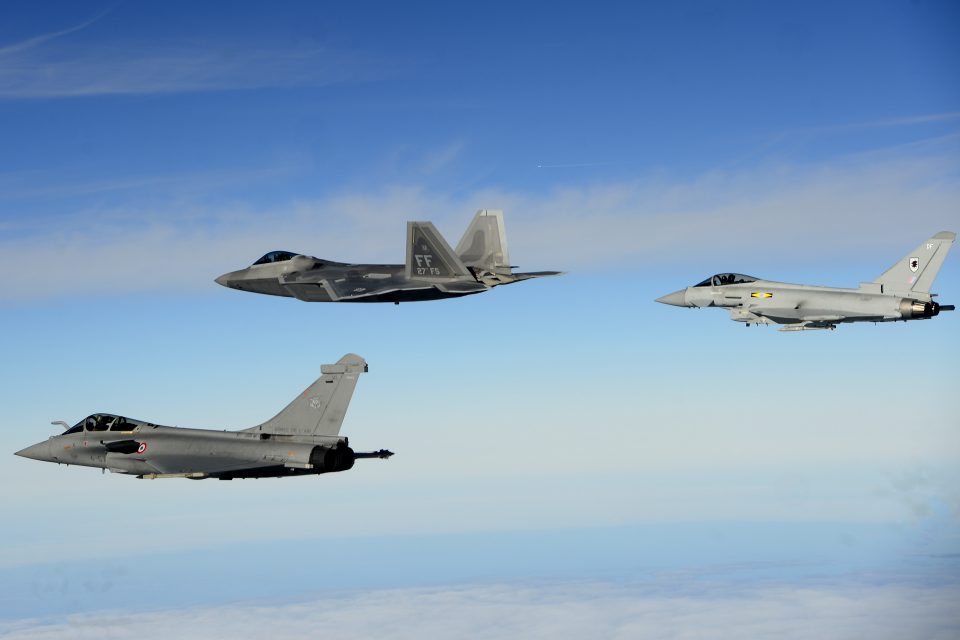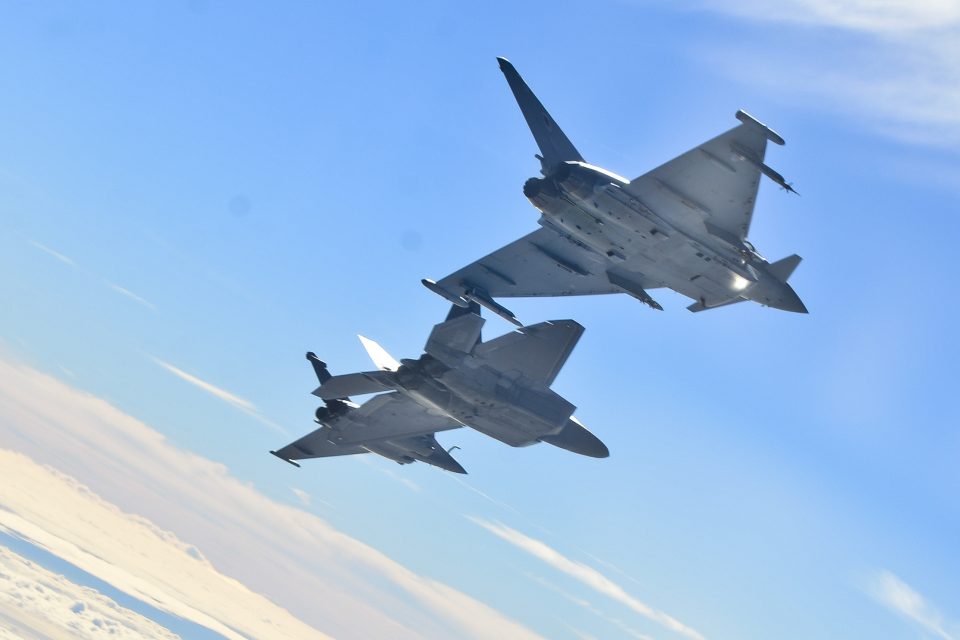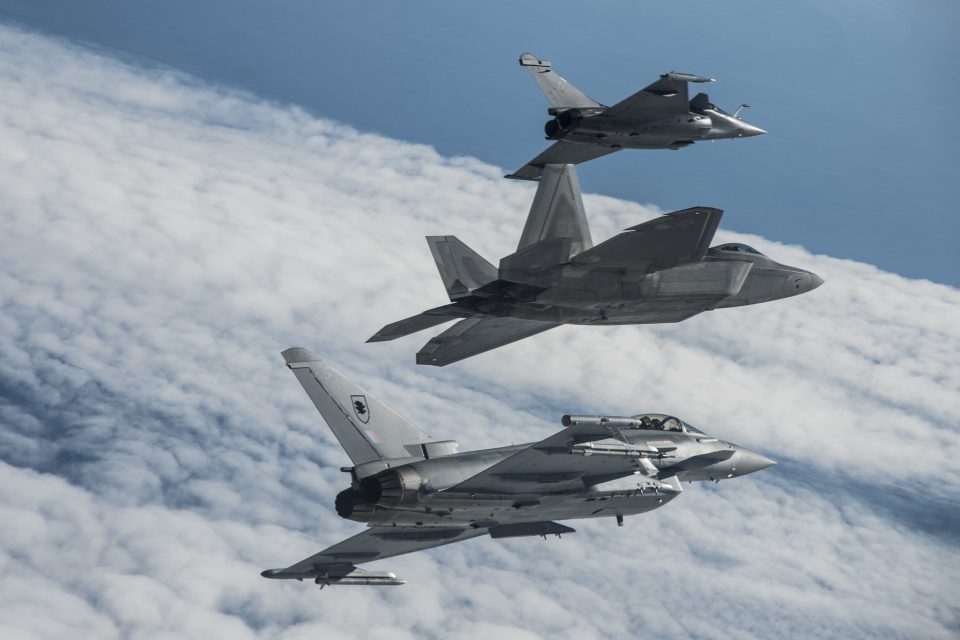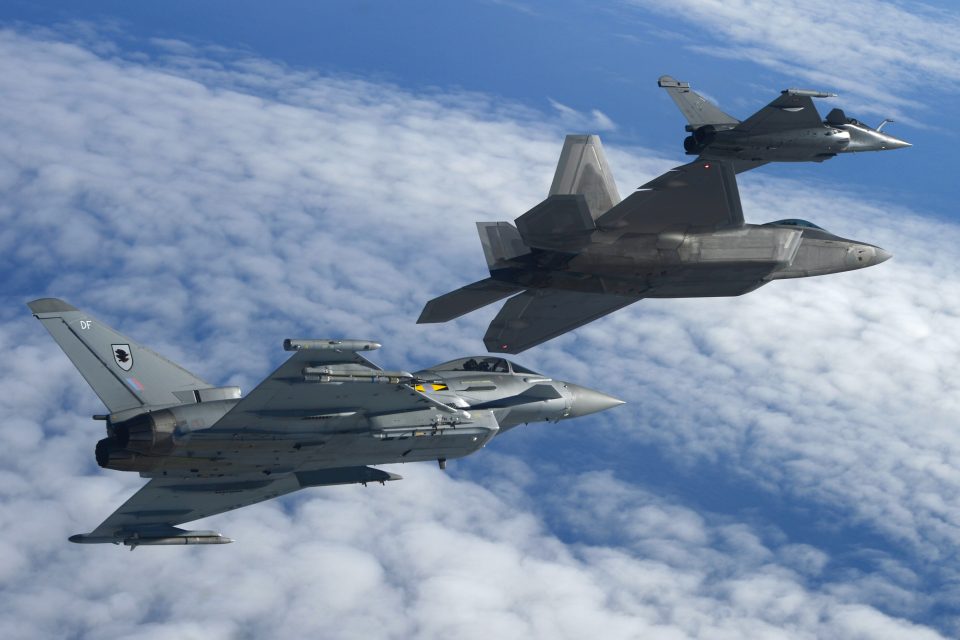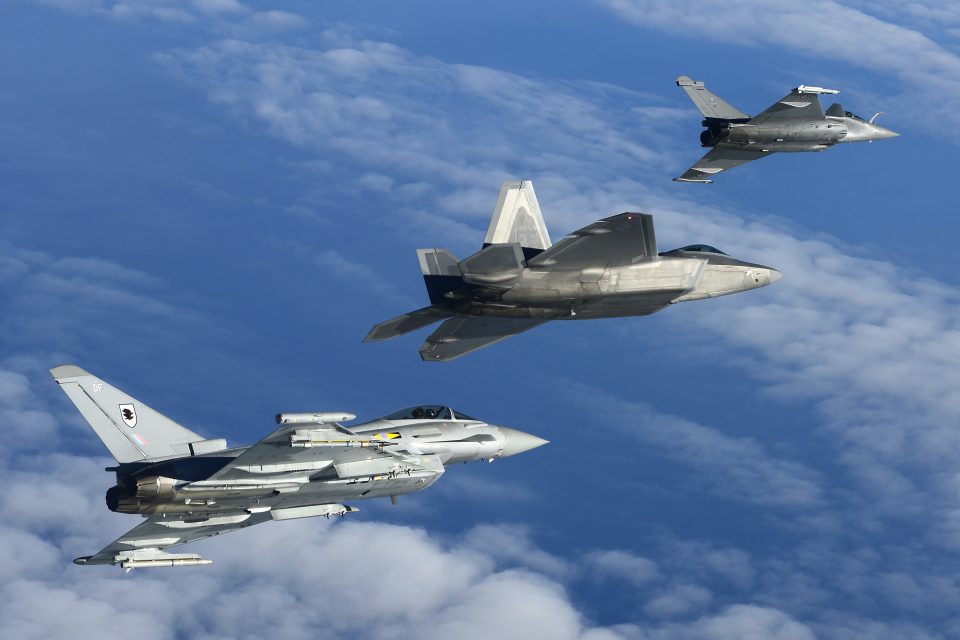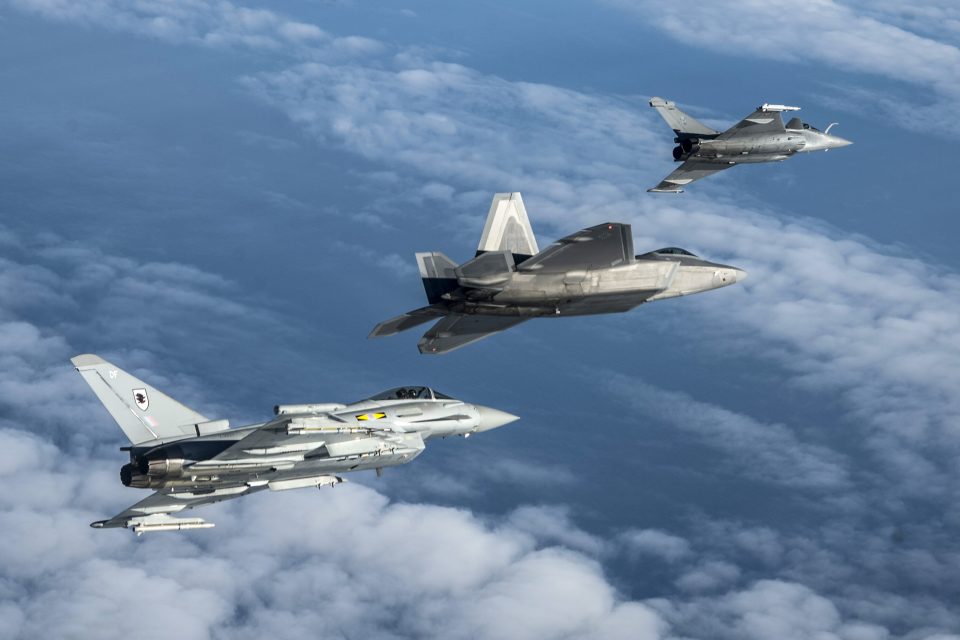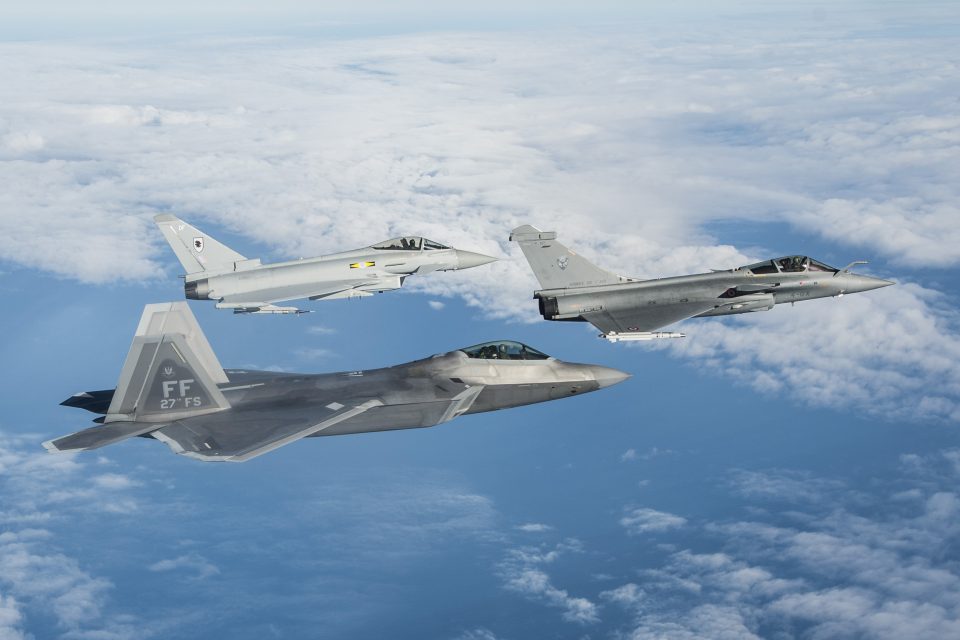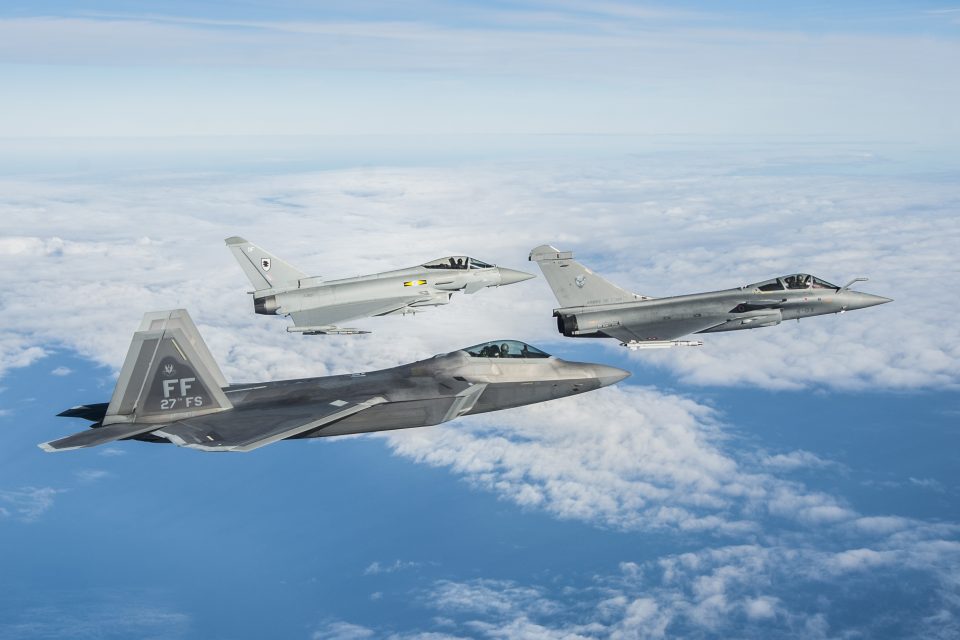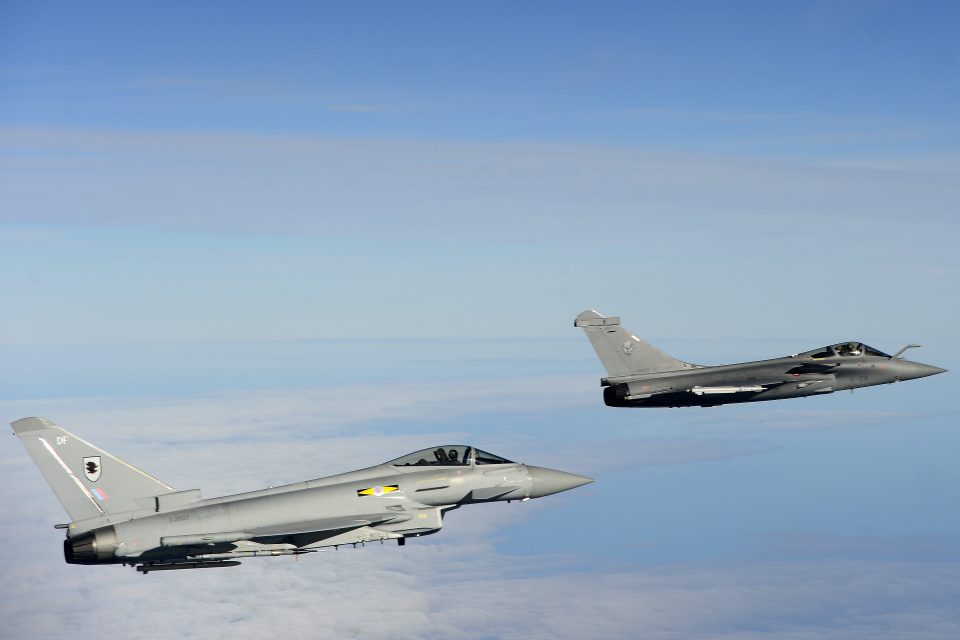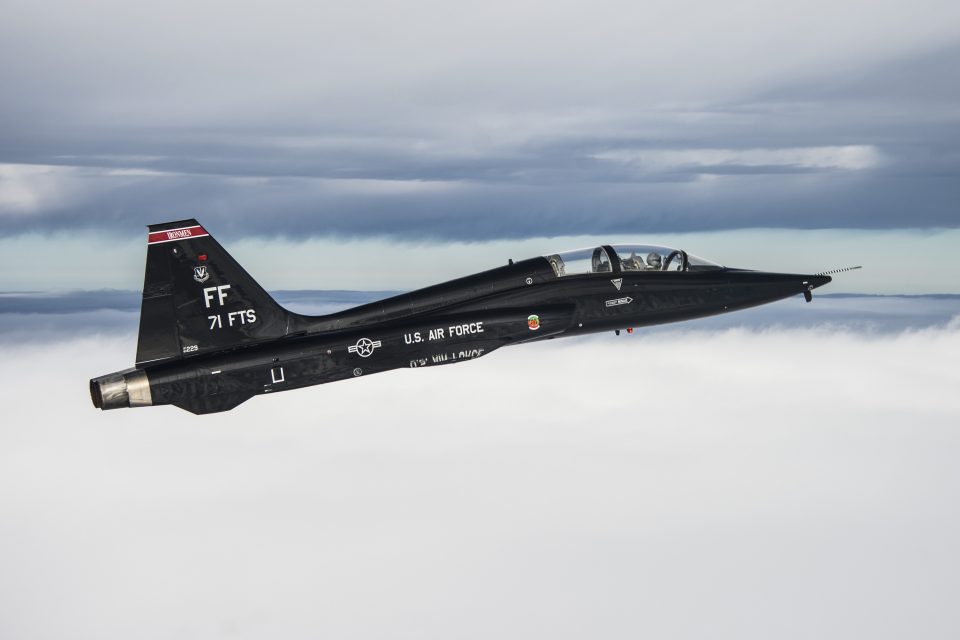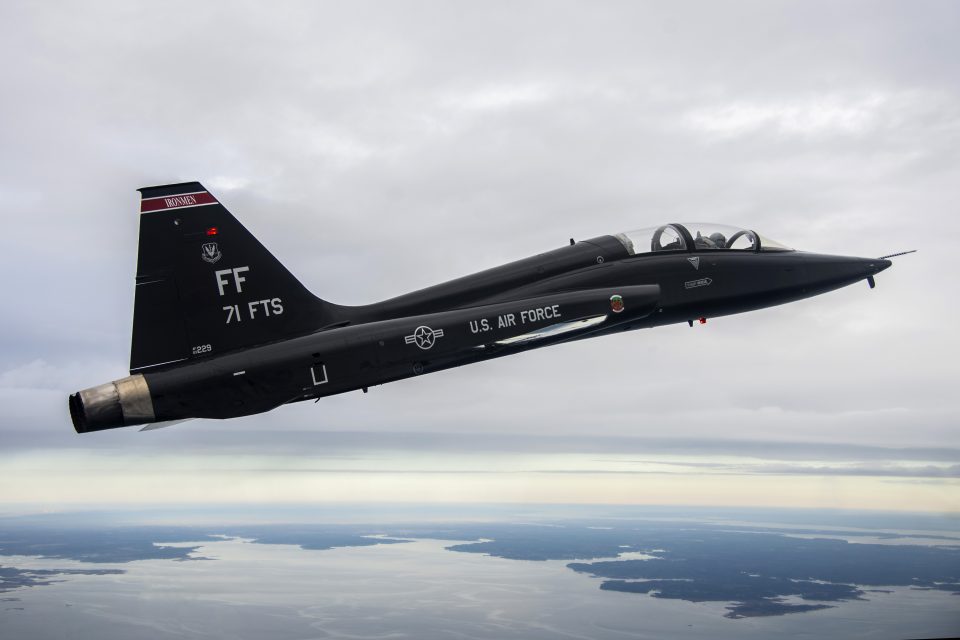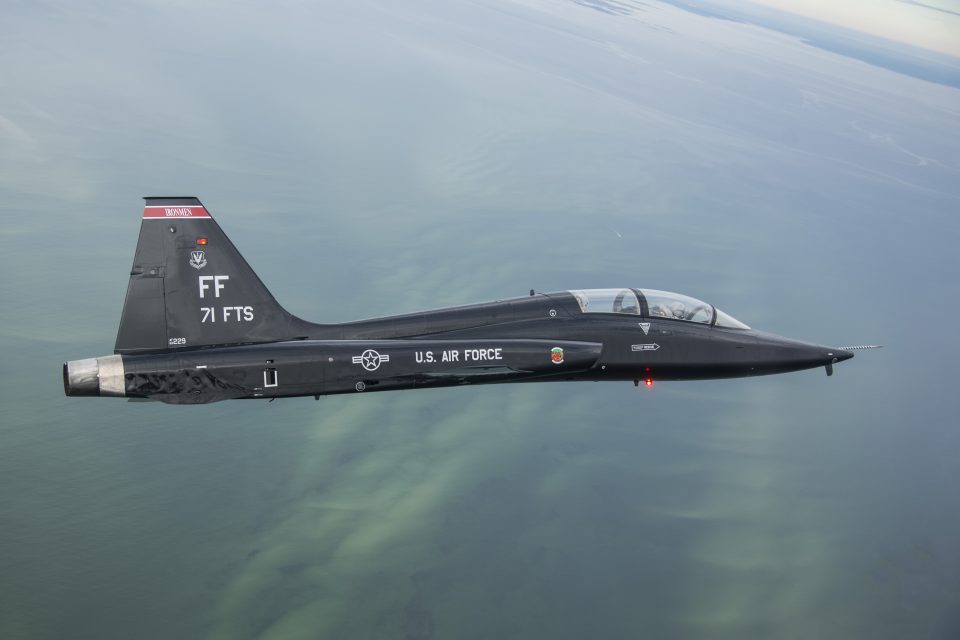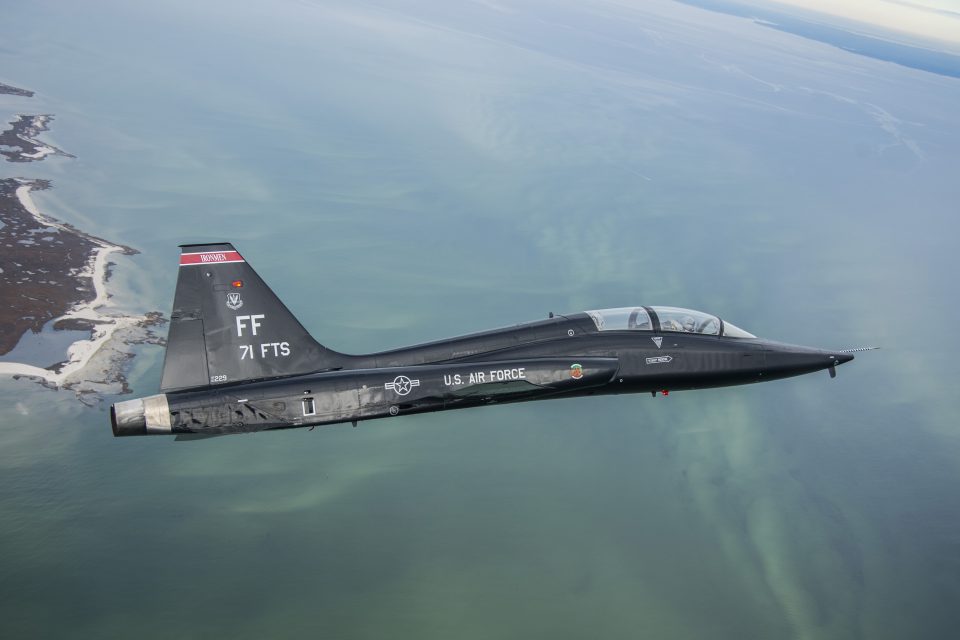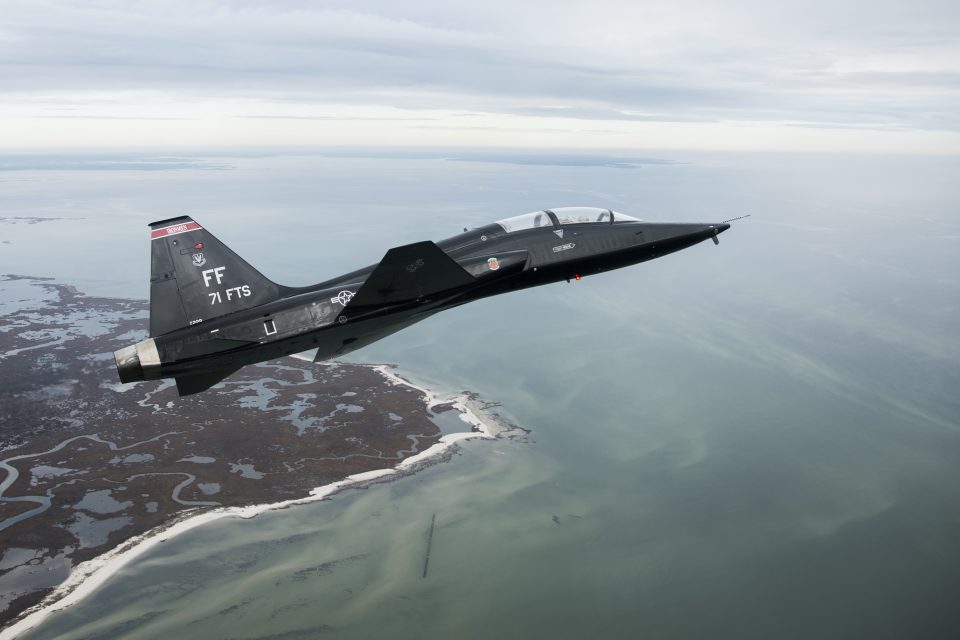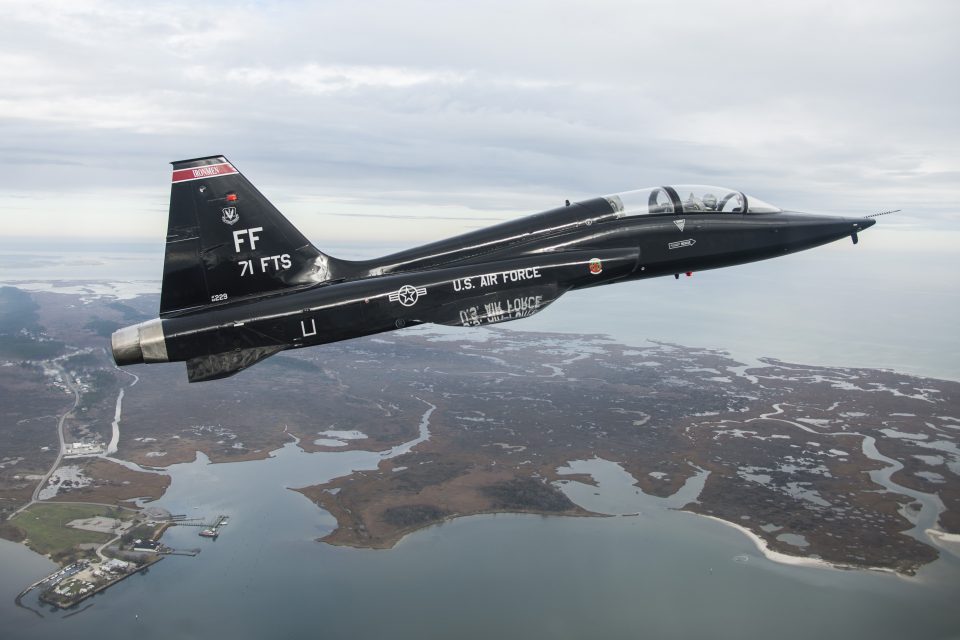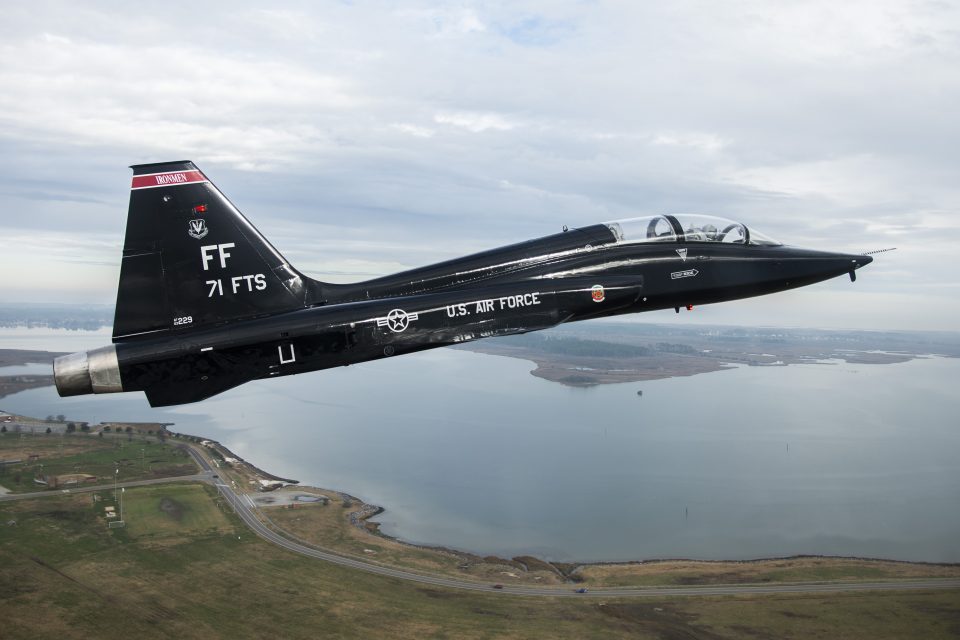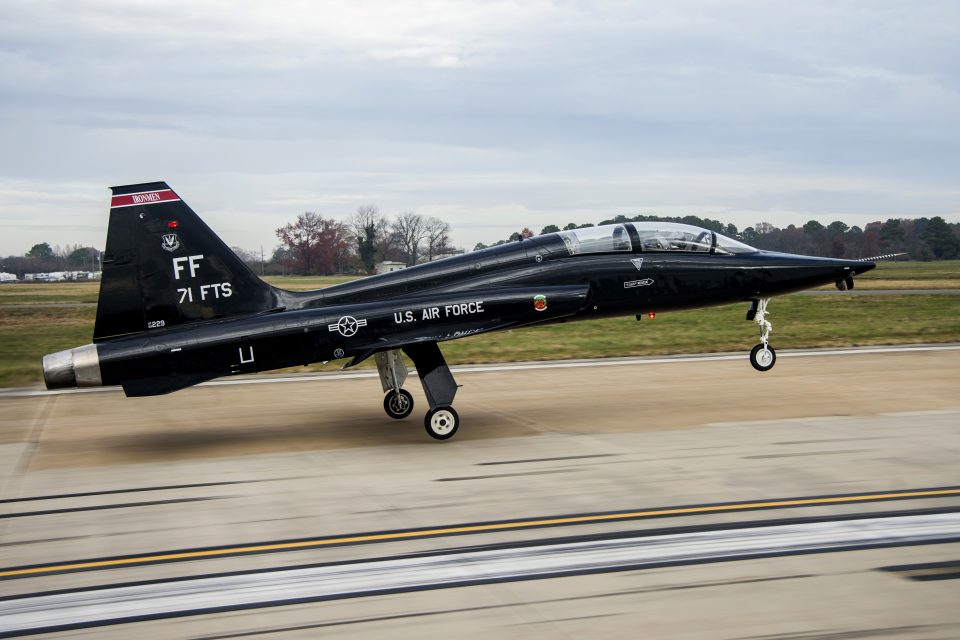2015-12-16 The tip of the spear in the exercise was provided by the premier combat jets operating today in the USAF, the RAF, and the French Air Force.
Each of these combat jets—the F-22, the Eurofighter and the Rafale – has more than 10 years of combat under its belt with modernization programs underway to enhance their capabilities.
Each provides a different capability to the blue force engaged with an adversary in contested airspace.
The F-22 provides a fifth generation warfare enablement to the rest of the air combat force, which means many things which we will discuss in later pieces.
It is about the evolution of the air combat force – you fight with the force you have – and about how that force is changing under the template of fifth generation capabilities.
In an interview with the Commander of the ACC, General “Hawk” Carlisle, the point was made that the F-22 was a key enabler for the air combat force currently, and had led to a re-norming of airpower in practice.
Carlisle emphasized throughout our meeting the importance of the training transition throughout the fleet, not simply the operation of the F-22 and the coming of the F-35 as in and of themselves activities.
It is about force transformation, not simply the operation of the fifth generation aircraft themselves as cutting edge capabilities.
General Carlisle: “It is important to look at the impact of the F-22 operations on the total force. We do not wish, nor do the allies wish to send aircraft into a contested area, without the presence of the F-22.
It’s not just that the F-22s are so good, it’s that they make every other plane better. They change the dynamic with respect to what the other airplanes are able to do because of what they can do with regard to speed, range, and flexibility.
It’s their stealth quality. It’s their sensor fusion. It’s their deep penetration capability. It is the situational awareness they provide for the entire fleet which raises the level of the entire combat fleet to make everybody better.”
The shift is to a new way of operating.
What is crucial as well is training for the evolving fight, and not just remaining in the mindset or mental furniture of the past.
It is about what needs to be done NOW and training towards the evolving and future fight.
General Carlisle: “The F-22s are not silver bullets.
The F-22s make the Eagles better, and the A-10s better, and the F-16s better. They make the bombers better.
They provide information. They enable the entire fight.
And its information dominance, its sensor fusion capability, it’s a situational awareness that they can provide to the entire package which raises the level of our capabilities in the entire fight.
This is not about some distant future; it is about the current fight.”
https://sldinfo.com/f-22s-come-to-middle-east-operations-the-acc-commander-looks-at-the-way-ahead-2/
https://sldinfo.com/the-re-norming-of-airpower-in-practice-an-f-22-enabled-air-combat-force/
But one key difference from the past is the role of the AWACs.
If this exercise was held 12 years ago, not only would the planes have been different but so would the AWACS role.
The AWACS would have worked with the fighters to sort out combat space and lanes of operation in a hub spoke manner.
With the F-22 and the coming F=35, horizontal communication among the air combat force is facilitated so that the planes at the point of attack can provide a much more dynamic targeting capability against the adversary with push back to AWACS as important as directed air operations from the AWACS.
The Typhoon is very lethal combat asset which is leading the RAF attacks against ISIS in the Middle East with the Typhoon-Tornado tandem as a key part of the force package.
Typhoon modernization is adding to the lethality and survivability of Typhoon and will make it even a more valuable member of any air combat coalition.
https://sldinfo.com/a-special-report-on-eurofighter-modernization-shaping-a-way-ahead/
This is not about shaping a lowest common denominator coalition force but one able to fight more effectively at the higher end as a dominant air combat force.
The pilots learning to work together to execute evolving capabilities are crucial to mission success in contested air space.
The Rafale is the oldest of the three fighters in the core air combat air force in the exercise.
The plane has seen significant combat experience in Africa and the Middle East and Afghanistan.
It is the key enabler of the French force approach to joint and expeditionary operations, and over time the combat systems on the aircraft have seen significant modernization.
Fifteen years have passed since the first Rafale entered in service in the French Navy.
“We started very small with a fleet of only ten aircraft up until 2004”, recalls Marie-Astrid Vernier, currently director of military support at Dassault Aviation and who has worked on the Rafale since 1994. The current French Rafale fleet has been built with the delivery of four different “tranches” of aircraft which have been upgraded over the years into various standards, the latest one being the Standard F3R to be delivered in 2018.
Today’s Rafale F3 has little to do with the very first F1: “Retrofitting the very first planes from a F1 standard to a F3 standard takes far more time than upgrading later-built planes”, explains Capitaine de Vaisseau Sébastien Fabre, formerly in charge of the support of the Rafale fleet within the French MoD. As the thousandth modification was achieved a few months ago, the latter stressed in an interview that “60% of these changes relate to standard and technical tracking, while the rest has to do with improving equipment and support tools”.
Today’s 2015 Rafale is a rather different bird from the 2000’s Rafale, as new technologies allowed for new operational missions, which in turn drove new technical requirements.
http://breakingdefense.com/2015/06/the-paris-air-show-and-military-aviations-future/
These planes are the tip of the spear for the air combat force.
But neither the British nor the French would be operating at Langley AFB without the expeditionary capabilities of the two air forces.
This means support aircraft and personnel which can move to the forward operating base, in this case Langley, to work together.
And in this case their was a collaborative effort as RAF C-17s and 330MRTT aircraft flew from Britian to France to support the movement to the US base.
The aggressor role in the exercise was provided by the T-38s and F-15s of the USAF.
The video below shows a number of these aircraft operating during the exercise.
The Planes in the Trilateral Exercise from SldInfo.com on Vimeo.
Credit goes to the RAF for this video.
Credit for the photos above goes to the USAF.


